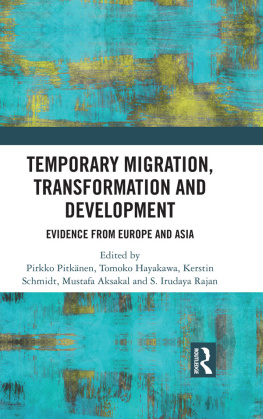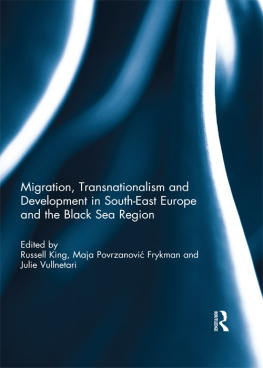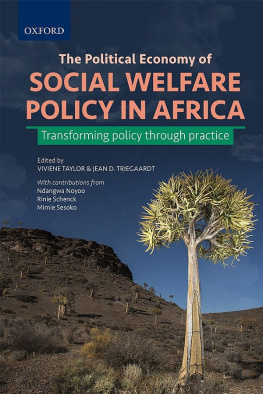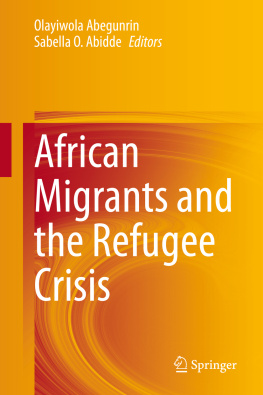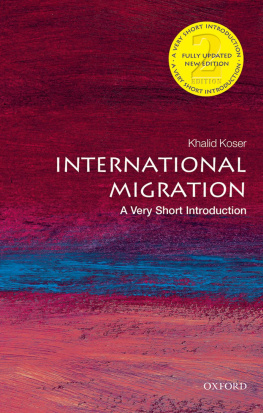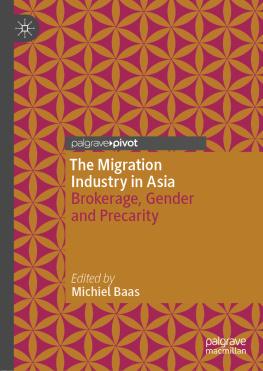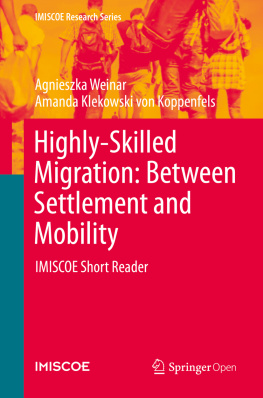First published in 2015 by I.B.Tauris & Co Ltd
www.ibtauris.com
Distributed worldwide by I.B.Tauris & Co Ltd
Registered office: 6 Salem Road, London W2 4BU
Copyright Editorial Selection Alessandra Venturini and Philippe Fargues
Copyright Individual Chapters 2015 Munzoul Assal, Anna Di Bartolomeo, Franoise De Bel-Air, Abderazak Bel Hadj Zekri, Hassan Boubakri, Tamirace Fakhoury, Habib Fourati, Choghig Kasparian, Mohamed Khachani, Asem Khalil, Ali Mebroukine, Edlira Narazani, Zekeria Ould Ahmed-Salem, Nadine Sika, Paul Tabar
The right of Alessandra Venturini and Philippe Fargues to be identified as the editors of this work has been asserted by the editors in accordance with the Copyright, Designs and Patents Act 1988
All rights reserved. Except for brief quotations in a review, this book, or any part thereof, may not be reproduced, stored in or introduced into a retrieval system, or transmitted, in any form or by any means, electronic, mechanical, photocopying, recording or otherwise, without the prior written permission of the publisher.
References to websites were correct at the time of writing.
International Library of Africa Studies 45
ISBN: 978 1 78076 713 0
eISBN: 978 0 85773 767 0
A full CIP record for this book is available from the British Library
A full CIP record is available from the Library of Congress
Library of Congress Catalog Card Number: available
LIST OF TABLES, FIGURES AND CHARTS
Figures
Arab migration stocks by level of education and region of residence (thousand values), c.2005.
Source: own elaboration on Database on Immigrants in OECD Countries (DIOC).
Proportion of highly skilled persons among migrants and the origin population, age group 2534, c.2005.
Source: own elaboration on data from Arab national statistical institutes and from Database on Immigrants in OECD Countries (DIOC).
Unemployment rate among the illiterate and graduates in Egypt and Tunisia, 19802011.
Source: own elaboration on Egypt, Central Agency for Public Mobilization and Statistics; Tunisia, Institut National de la Statistique.
Proportion (in %) of highly skilled Lebanese migrants in Australia and Canada by generation (a) and duration of stay (b), 2006.
Source: own elaboration on Database on Immigrants in OECD Countries (DIOC).
Proportions (in %) of highly skilled Algerian, Egyptian and Mexican migrants in North American and European states, c.2005.
Source: own elaboration on Database on Immigrants in OECD Countries (DIOC).
Stock of migrants by origin country in main destination areas around 2000.
Source: Beine, Doqcuier & Marfouk, 2009.
Share of highly skilled migrants to main destination areas in 2005.
Source: DIOC-OECD.
Share of migrants to home labour force by skills in 2005.
Source: DIOC-OECD.
Enrolment in Tertiary Education in 1990, 2000 and 2007.
Source: UNESCO.
Concentration of higher educational levels in the various populations according to propensity to migrate.
Charts
Net migration, arrivals and departures of Jordanians (19902012).
Source: Public Security Directorate, data on entries and departures, published in the Central Bank of Jordans Monthly Statistical Bulletins.
Remittances of expatriate Jordanians (19612012).
Source: Central Bank of Jordan.
Tables
Proportion of highly skilled migrants from selected Arab countries to OECD countries by origin, destination and generation c.2005.
Source: Database on Immigrants in OECD Countries (DIOC).
Egyptian migrants and highly skilled migrants in Arab countries in 2007.
Source: CAPMAS, www.capmas.gov.eg.
Comparative framework of admission policies in 11 OECD countries of destination.
Proportion of migrants with a tertiary education by country of origin, country of destination and generation.
Source: Database on Immigrants in OECD Countries (DIOC).
Total and Highly Skilled Emigration Rate c.2000
Source: OCDE, 2011, DIOC.
Over-education and over-occupation of workers in various countries. Source: own elaboration on Database on Immigrants in OECD Countries (DIOC).
Growth of tertiary education and emigration rate.
The evolution of the active Lebanese population and the number of active university graduates, 19972007 (in thousands).
The evolution of the number of Lebanese residents and the number of university graduates employed in the different economic sectors, 19972007, according to gender (number in thousands and average growth rate in % by year).
Evolution of the number of Lebanese residents and the number of university graduates employed in the public sector, 19972007, according to gender (number in thousands and average growth rate in % per year).
Emigration rate and unemployment rate, 19972007, in the total active population and in the active graduate population (in %).
Distribution of graduates, male and females, who emigrated, 19972007, according to departure reasons (in %).
Distribution of university graduates, male and female, who emigrated, 19972007, according to destination country (in %).
Distribution of graduates, male and female, who emigrated, 19972007, according to their occupation in 2007 (in %).
Distribution of university graduate male and female who emigrated, 19972007, according to the country of their degree (in %).


